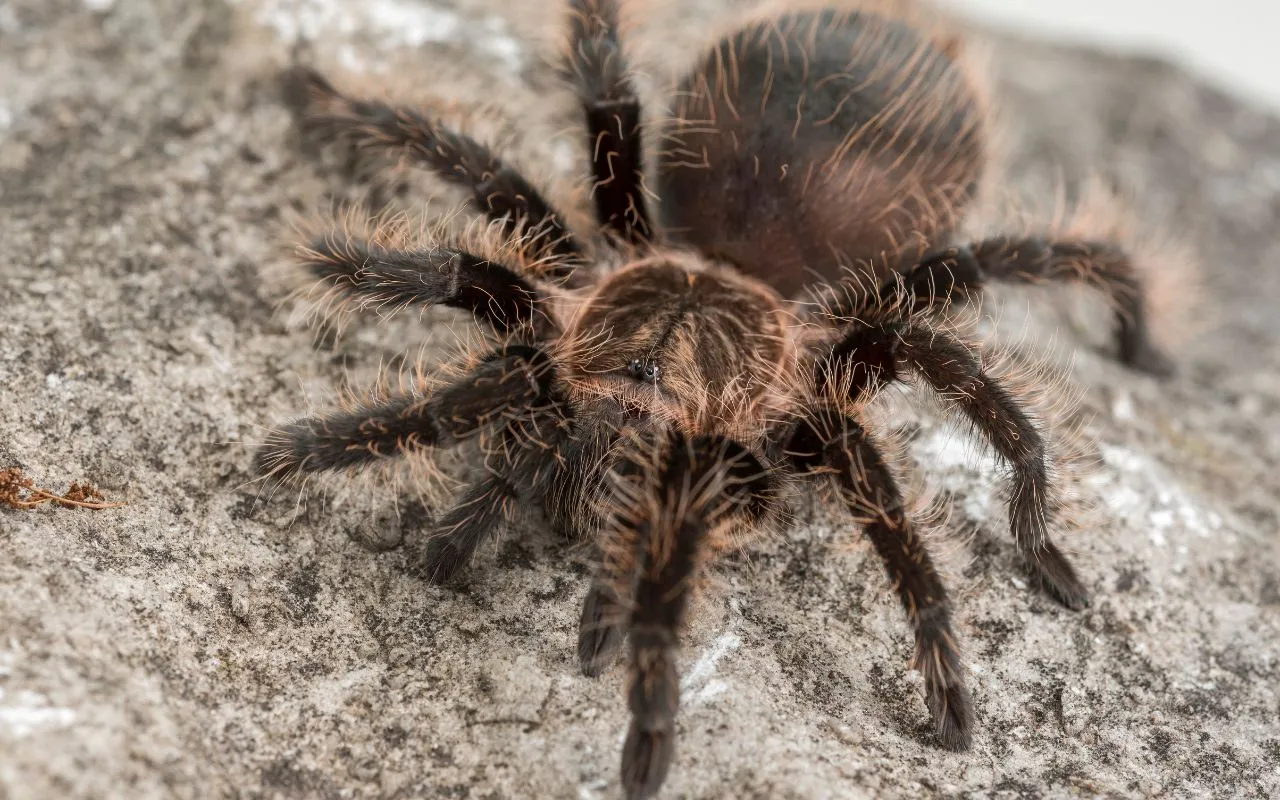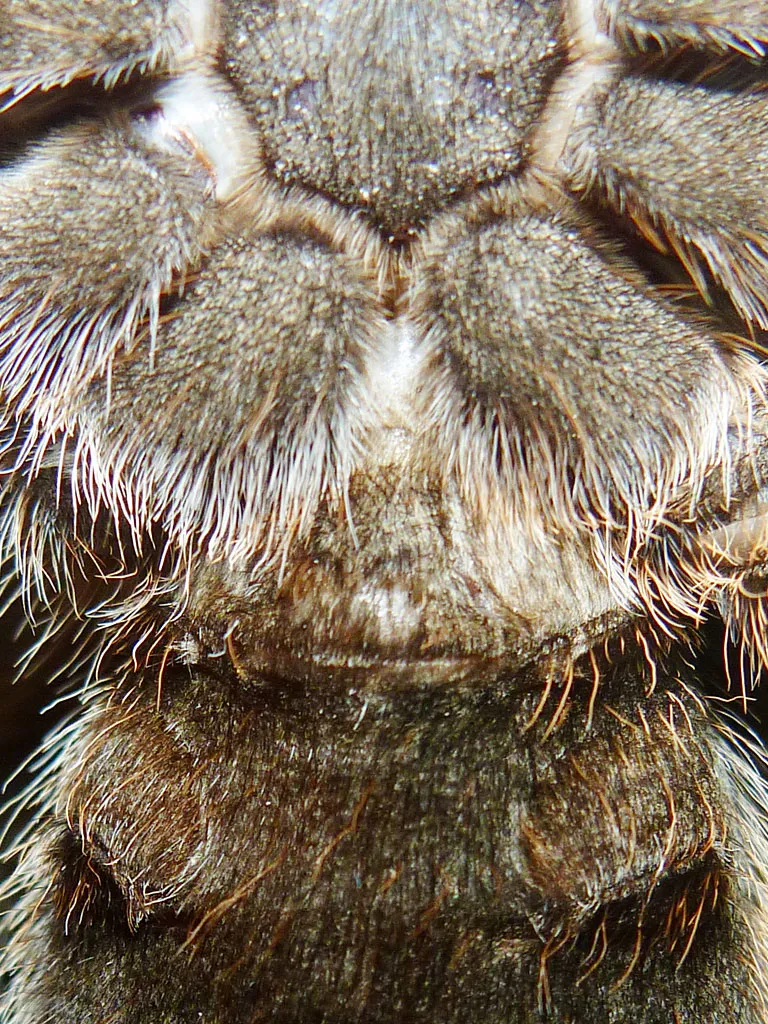Understanding Rose Hair Tarantula Sexing
Sexing a Rose Hair Tarantula, scientifically known as Grammostola rosea, is a fundamental aspect of responsible tarantula keeping. Determining the gender of your tarantula is crucial for a variety of reasons, including understanding its lifespan, anticipating its behavior, and planning for potential breeding endeavors. Unlike many other pets, tarantulas do not exhibit obvious external sexual dimorphism until they reach a certain age or maturity level. This lack of immediate visual cues necessitates employing specific methods to accurately ascertain whether your Rose Hair Tarantula is male or female. This guide will delve into the different methods used to sex Rose Hair Tarantulas, providing you with the knowledge necessary to identify the gender of your own pet.
Why Sexing Matters for Rose Hair Tarantulas
Knowing the gender of your Rose Hair Tarantula affects several aspects of its care and your expectations. Females generally have a longer lifespan, often living for 20 years or more, while males typically live for 5-10 years. This longevity difference is a significant consideration when planning the long-term commitment of tarantula ownership. Furthermore, the behavior of male and female Rose Hair Tarantulas can differ, particularly as they mature. Males, especially after their final molt, exhibit behaviors related to mating, such as wandering in search of a mate, which may influence your enclosure setup and security measures. Sexing also becomes critical if you are interested in breeding your tarantula. Successfully breeding tarantulas requires both a male and a female, and accurate identification of their genders is the first step in this complex process.
Methods for Sexing Rose Hair Tarantulas

Several methods are available for sexing a Rose Hair Tarantula, each with varying degrees of accuracy and practicality. The most common methods include examining the molt (exuviae), inspecting the underside (urogyneal examination), and observing physical characteristics like size and overall appearance. While some methods are more accessible to novice keepers, others require a closer look and a more experienced eye. It is important to remember that no single method is foolproof, and it is often best to combine multiple techniques to confirm the gender accurately. Patience and a careful approach are essential to avoid causing any harm to your tarantula during the sexing process. This section will explore each method in detail, helping you understand the steps involved and the specific characteristics to look for.
Examine the Molt for Gender Clues
Examining the molt, the shed exoskeleton of a tarantula, is one of the most reliable methods for determining the gender of a Rose Hair Tarantula. The molt provides a detailed internal view of the tarantula’s anatomy, which is often impossible to observe in a live specimen without causing undue stress. By carefully inspecting the shed skin, you can identify specific sexual characteristics that are indicative of either a male or a female. This method is often preferred as it minimizes handling of the tarantula, reducing the risk of injury. The key is to have a clean, undamaged molt and to be familiar with the anatomy of the tarantula, as the distinguishing features are not always immediately obvious. The clarity of the molt and the presence of these characteristics are crucial for accurate gender identification.
How to Inspect a Rose Hair Tarantula’s Exuviae
To examine the molt effectively, start by carefully removing the shed skin from the enclosure. Handle the molt gently to prevent any tears or damage, as tears can obscure critical features. Place the molt under a bright light to enhance visibility. The ideal lighting setup is a strong, focused light source. Carefully stretch out the molt, particularly the abdomen, to flatten it and allow for better inspection. Use a magnifying glass or a jeweler’s loupe to examine the relevant areas closely. Pay close attention to the underside of the abdomen, where the sexual organs are located. The process demands a steady hand and a keen eye. Taking your time and avoiding unnecessary force is important.
Urogyneal Examination for Sex Determination

The urogyneal examination involves inspecting the underside of the tarantula’s abdomen for the presence of specific sexual structures. This method requires a magnifying glass and a steady hand, as the structures can be tiny and subtle. The key is to identify the presence of a spermathecae, the female reproductive organ. Males do not possess this structure, and their reproductive organs are different. If the tarantula is cooperative, it may be possible to gently lift the abdomen to gain a clearer view of the underside. It is essential to approach this method with caution and patience to avoid stressing or harming the tarantula. If you are unsure, it is best to seek advice from an experienced tarantula keeper or a veterinarian with experience with invertebrates before attempting this examination. Make sure you do this with calm and patience.
Identifying the Spermathecae in Females
In a female Rose Hair Tarantula, the spermathecae are two or more sac-like structures located on the underside of the abdomen, near the epigastric furrow. These structures are used to store sperm after mating. The spermathecae may appear as small, raised bumps or pouches. Their size and shape can vary, but their presence is a definitive indicator of a female. They can be difficult to see, especially in younger tarantulas or if the molt is not fully expanded. Using a magnifying glass is vital for this process, allowing you to observe these delicate structures more closely. The location and distinct shape of the spermathecae are what set them apart. Careful and accurate identification is key to correctly sexing your tarantula.
Checking for Book Lungs to Identify Gender
Book lungs are respiratory organs that are present in all tarantulas and can be used to assist in determining gender. While not as definitive as inspecting the spermathecae in the molt, the shape and appearance of the book lungs can sometimes offer clues. The book lungs are visible on the underside of the abdomen as a series of delicate, leaf-like structures. In males, the book lungs are usually more pronounced and may appear slightly different from those of females. Carefully inspect the book lungs for any visible differences. Due to their position, the book lungs are usually easier to visualize with the naked eye. This method is often used in conjunction with other techniques to provide a more comprehensive assessment.
Differences in Size and Appearance

While not always reliable on their own, size and appearance can offer some hints about the gender of a Rose Hair Tarantula, particularly as they mature. Female Rose Hair Tarantulas tend to be larger and more robust than males, growing to a larger overall size and possessing a more rounded abdomen. Males are typically smaller and may appear more slender, especially as they approach maturity. However, these differences can be subtle and may vary depending on the individual tarantula and its environment. Size and appearance alone are not sufficient to determine gender with certainty, so they should always be considered alongside other sexing methods. Consistent observation over time can help discern patterns, but confirm these with other methods.
Male Rose Hair Tarantula Characteristics
Male Rose Hair Tarantulas, especially after their final molt, often display specific characteristics that differentiate them from females. One of the most noticeable changes is the presence of tibial hooks on their front legs. These hooks are used to hold the female’s fangs during mating. Additionally, male tarantulas develop palpal bulbs, located on the ends of their pedipalps, which are used to store and transfer sperm. These bulbs appear as small, rounded structures. Males also tend to have a smaller overall body size and a less rounded abdomen compared to females. However, these characteristics only become apparent after the final molt, which is also when the male reaches sexual maturity. Keep these details in mind while doing your checks.
Female Rose Hair Tarantula Characteristics
Female Rose Hair Tarantulas typically maintain a consistent appearance throughout their adult life. They do not undergo a final molt and retain the same physical characteristics. Females tend to be larger and have a more robust body shape, with a rounder abdomen that can swell significantly after feeding. Unlike males, females do not develop tibial hooks or palpal bulbs. In the molt, the presence of spermathecae is the definitive sign of a female. This feature, when examined in the exuviae, is the most reliable indicator. Regular observation and familiarity with these traits will help you in accurately identifying your female Rose Hair Tarantula. Careful inspection and the use of a magnifying glass will greatly assist in differentiating female characteristics.
Behavioral Differences Between Sexes

Behavioral differences between male and female Rose Hair Tarantulas can also provide some clues about their gender, although these observations are not always definitive. Mature males often exhibit wandering behavior, especially after their final molt, as they actively search for a mate. This wandering can manifest as increased activity and a tendency to explore their enclosure more frequently. They may also become less inclined to eat as they focus on reproduction. Females, in contrast, tend to be more sedentary and spend more time in their burrow or preferred hiding spot. They are more likely to feed consistently. The behavioral differences are most apparent when the male has reached sexual maturity. However, it’s important to remember that these behaviors are general tendencies and can vary between individuals. Observe your tarantula’s behavior to better understand it.
Mature Male Tarantulas & Mating Behavior
Understanding the mating behavior of Rose Hair Tarantulas can help you recognize the signs of a mature male. Once a male has reached his final molt, he is sexually mature and ready to mate. The male will create a sperm web, a small silk mat on which he deposits his sperm. He then uses his palpal bulbs to pick up the sperm and store it. When a male encounters a receptive female, he will initiate courtship behavior, which includes tapping and drumming. The process is very interesting to observe. Mating itself involves the male inserting his palpal bulbs into the female’s epigastric furrow to deposit the sperm. Observing these behaviors can help in confirming the gender. Be mindful of the potential risks.
Understanding the Risks of Mating
Mating tarantulas involves inherent risks, especially for the male. Female Rose Hair Tarantulas, if they are not receptive, can attack and consume the male. This is a natural behavior. The male, therefore, must be quick and agile to avoid being eaten. Even successful mating carries risks. The female may not produce viable eggs, or the eggs may fail to hatch. Breeding is a complex process requiring careful planning and preparation. If you intend to breed your tarantulas, research the process thoroughly. It’s vital to have a plan and be prepared for all possible outcomes. If you’re not ready for breeding, it’s best to keep your male and female separated to avoid unwanted reproduction and potential harm.
Final Thoughts on Sexing Rose Hair Tarantulas

Accurately sexing a Rose Hair Tarantula requires a combination of observation, experience, and the right techniques. Examining the molt is the most reliable method, but understanding the other methods, such as urogyneal examination and assessing physical characteristics, can help you confirm your findings. Remember that patience is key. Take your time, use the appropriate tools, and seek advice from experienced keepers if needed. By employing these methods, you can confidently determine the gender of your Rose Hair Tarantula and provide it with the best possible care. By following these guidelines, you will be well-equipped to care for your Rose Hair Tarantula.
Additional Resources for Tarantula Keepers
For further information on sexing Rose Hair Tarantulas and other aspects of tarantula care, consider the following resources: Online tarantula forums provide a great space to engage with other keepers. Reputable tarantula care guides offer detailed instructions on various aspects of tarantula keeping. Consulting with experienced tarantula keepers or your veterinarian can offer guidance. You can also consult with specialized tarantula breeders, who can offer invaluable expertise. By using these resources, you can continue to expand your knowledge and provide the best possible care for your Rose Hair Tarantula. Continued learning and engagement with the tarantula community will help you become a more informed and successful tarantula keeper.
